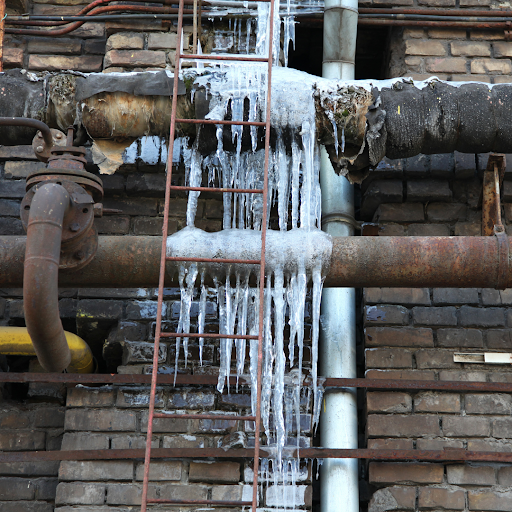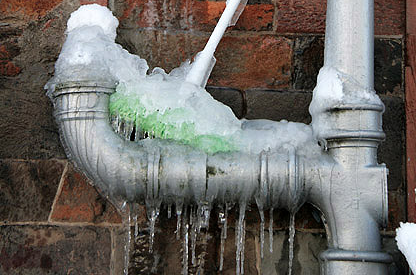Protecting Against Frozen Plumbing: Effective Methods for Winter
Protecting Against Frozen Plumbing: Effective Methods for Winter
Blog Article
On this page further down yow will discover a good deal of good quality information and facts related to How to prepare your home plumbing for winter weather.

Cold weather can ruin your pipes, especially by freezing pipes. Here's exactly how to prevent it from taking place and what to do if it does.
Intro
As temperatures decline, the risk of frozen pipes boosts, possibly causing costly fixings and water damages. Comprehending exactly how to avoid frozen pipelines is important for property owners in chilly environments.
Recognizing Icy Pipelines
What causes pipelines to ice up?
Pipelines ice up when revealed to temperature levels listed below 32 ° F (0 ° C) for expanded periods. As water inside the pipelines freezes, it expands, putting pressure on the pipeline wall surfaces and possibly triggering them to burst.
Threats and problems
Frozen pipelines can cause water system interruptions, home damage, and expensive repair services. Burst pipes can flooding homes and cause considerable structural damages.
Indicators of Frozen Piping
Determining frozen pipes early can prevent them from breaking.
How to determine frozen pipelines
Search for decreased water circulation from taps, unusual smells or sounds from pipelines, and noticeable frost on subjected pipes.
Avoidance Tips
Shielding prone pipes
Cover pipelines in insulation sleeves or use warmth tape to secure them from freezing temperatures. Concentrate on pipes in unheated or external areas of the home.
Home heating methods
Maintain interior rooms appropriately heated, specifically areas with pipes. Open up cabinet doors to enable cozy air to circulate around pipelines under sinks.
Protecting Outside Pipes
Yard hoses and outside taps
Separate and drain pipes garden hose pipes before winter months. Set up frost-proof spigots or cover outdoor faucets with shielded caps.
What to Do If Your Pipes Freeze
Immediate activities to take
If you believe frozen pipes, keep taps open up to relieve pressure as the ice melts. Make use of a hairdryer or towels taken in hot water to thaw pipes slowly.
Long-Term Solutions
Architectural modifications
Consider rerouting pipes far from outside wall surfaces or unheated areas. Add added insulation to attic rooms, basements, and crawl spaces.
Upgrading insulation
Buy premium insulation for pipelines, attics, and wall surfaces. Correct insulation helps preserve consistent temperature levels and reduces the threat of frozen pipelines.
Conclusion
Preventing frozen pipes requires aggressive actions and quick reactions. By comprehending the reasons, indicators, and safety nets, homeowners can safeguard their plumbing during cold weather.
Helpful Tips to Prevent Frozen Pipes this Winter
UNDERSTANDING THE BASICS: WHY PIPES FREEZE AND WHY IT’S A PROBLEM
Water freezing inside pipes is common during the winter months, but understanding why pipes freeze, and the potential problems it can cause is crucial in preventing such incidents. This section will delve into the basics of why pipes freeze and the associated problems that may arise.
THE SCIENCE BEHIND FROZEN PIPES
When water reaches freezing temperatures, it undergoes a physical transformation and solidifies into ice. This expansion of water as it freezes is the primary reason pipes can burst. As the water inside the pipe freezes, it expands, creating immense pressure on the walls. If the pressure becomes too great, the pipe can crack or rupture, leading to leaks and water damage.
FACTORS THAT CONTRIBUTE TO PIPE FREEZING
Low Temperatures: Extremely cold weather, especially below freezing, increases the risk of pipes freezing. Uninsulated or Poorly Insulated Pipes: Pipes located in unheated areas, such as basements, crawl spaces, or attics, are more prone to freezing. Insufficient insulation or lack of insulation altogether exacerbates the problem. Exterior Wall Exposure: Pipes running along exterior walls are susceptible to freezing as they encounter colder temperatures outside. Lack of Heating or Temperature Regulation: Inadequate heating or inconsistent temperature control in your home can contribute to frozen pipes. PROBLEMS CAUSED BY FROZEN PIPES
- Pipe Bursting: As mentioned earlier, the expansion of water as it freezes can cause pipes to burst, resulting in significant water damage.
- Water Damage: When pipes burst, it can lead to flooding and water damage to your property, including walls, ceilings, flooring, and personal belongings.
- Structural Damage: Prolonged exposure to water from burst pipes can compromise the structural integrity of your home, leading to costly repairs.
- Mold and Mildew Growth: Excess moisture from water damage can create a favorable environment for mold and mildew growth, posing health risks to occupants.
- Disrupted Water Supply: Frozen pipes can also result in a complete or partial loss of water supply until the issue is resolved.
WHY CERTAIN PIPES ARE MORE PRONE TO FREEZING
- Location: Pipes located in unheated or poorly insulated areas, such as basements, crawl spaces, attics, or exterior walls, are at higher risk of freezing.
- Exterior Pipes: Outdoor pipes, such as those used for irrigation or exposed plumbing, are particularly vulnerable to freezing as they are directly exposed to the elements.
- Supply Lines: Pipes that carry water from the main water supply into your home, including the main water line, are critical to protect as freezing in these lines can affect your entire plumbing system.
- Underground Pipes: Pipes buried underground, such as those connected to sprinkler systems or outdoor faucets, can be susceptible to freezing if not properly insulated.
https://busybusy.com/blog/helpful-tips-to-prevent-frozen-pipes-this-winter/

Do you really like reading about How to Prevent Your Pipes From Freezing? Place a remark further down. We'd be happy to find out your responses about this piece. Hoping that you come back again later on. Appreciated our blog posting? Please quickly share it. Let another person discover it. Thank you so much for your time spent reading it.
About Report this page